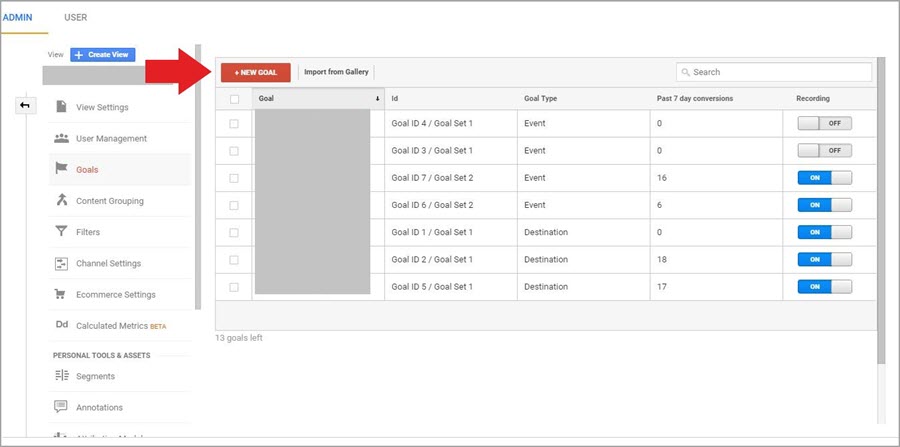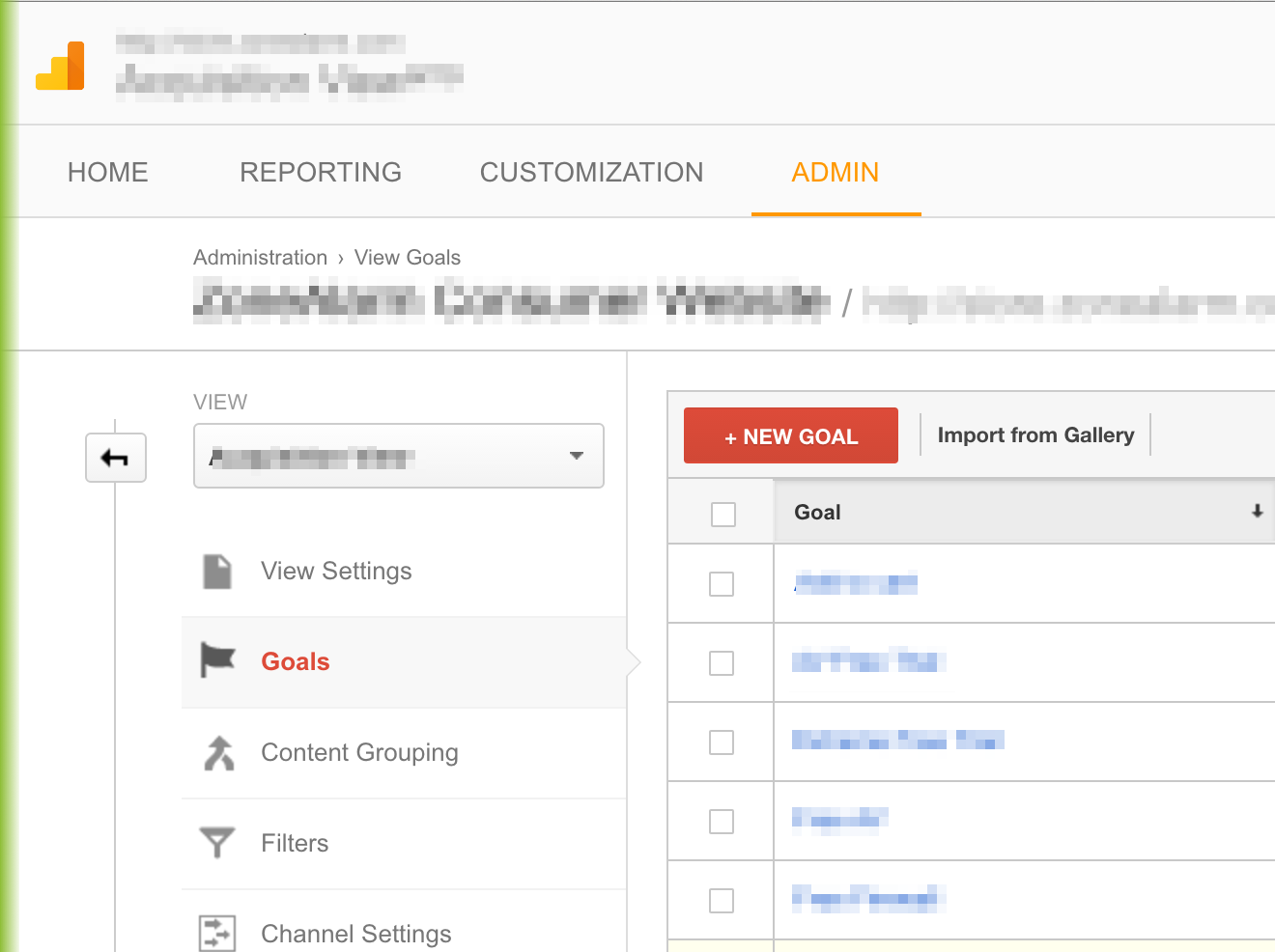Secret Insights on What Data Is Google Analytics Goals Unable to Track
Secret Insights on What Data Is Google Analytics Goals Unable to Track
Blog Article
Discover the Limitations of Google Analytics Goals: Revealing the Data Types That Remain Untrackable
As services significantly rely on data-driven decision-making, recognizing the restrictions of tools like Google Analytics becomes vital. While Google Analytics Goals deal valuable insights right into customer interactions, there exist data types that thwart monitoring, presenting obstacles to a comprehensive understanding of user habits.
Incomplete User Trip Tracking
Incomplete customer journey monitoring within Google Analytics can impede the capacity to accurately assess user behavior. When the user trip is not totally tracked, there are gaps in the information that prevent a detailed understanding of just how users communicate with a website. This lack of insight can result in missed opportunities for optimization and improvements to the user experience.
One usual concern with incomplete individual journey tracking is the failure to see the full course that customers take before completing a goal or leaving the site. Without this details, it is testing to recognize where individuals might be coming across challenges or rubbing points that avoid them from converting. In addition, incomplete monitoring can cover the influence of particular marketing initiatives or website adjustments on user habits.
To address this limitation, it is crucial to set up correct monitoring devices within Google Analytics to catch the entire individual trip. This may entail establishing occasion monitoring, objective funnels, or utilizing tools like Google Tag Manager to make sure that no essential interactions go unrecorded. By obtaining a comprehensive sight of the user journey, internet site owners can make more enlightened choices to enhance customer engagement and drive conversions.
Attribution Obstacles
Browsing via attribution difficulties in Google Analytics requires a complete understanding of how various touchpoints add to the total conversion process. Acknowledgment challenges develop from the intricacy of modern customer trips, where individuals engage with several networks before converting.
One usual acknowledgment difficulty is the problem in attributing conversions to the correct source, especially in cases where individuals engage with numerous channels before transforming. This can cause errors in identifying which advertising initiatives are driving one of the most conversions. Furthermore, cross-device tracking poses an additional acknowledgment obstacle, as customers often switch over between tools throughout their journey, making it challenging to track their communications perfectly. Online marketers must meticulously translate and assess attribution information to make enlightened choices and enhance their marketing strategies successfully.
Offline Conversions
Given the obstacles related to attributing conversions properly in online channels, the measurement of offline conversions provides a considerable opportunity for marketing experts seeking a more comprehensive understanding of their clients' journey. Offline conversions describe actions that clients take in the real world, such as making acquisitions in brick-and-mortar shops or over the phone, attending occasions, or basics involving with printed products - what data is google analytics goals unable to track. These conversions are crucial for services that operate both online and offline, as they supply important understandings into the efficiency of marketing projects across various touchpoints
Tracking offline conversions commonly posed a substantial obstacle for marketers, as it was challenging to attach these activities back to particular online communications accurately. With developments in technology, such as the assimilation of CRM systems, distinct identifiers, and voucher codes, businesses can currently connect the void in between online and offline information to acquire a more holistic sight of client behavior. By successfully determining offline conversions, marketing professionals can maximize their strategies, allocate resources extra effectively, and ultimately boost the overall customer experience.
Cross-Device Monitoring
Cross-device monitoring plays a crucial role in recognizing the interconnected nature of customers' digital communications throughout several gadgets. In today's omnichannel globe, where individuals seamlessly switch over between mobile phones, tablets, and desktops, tracking their behavior throughout these gadgets is crucial for marketing experts to gain a detailed view of their consumer trip.

Furthermore, privacy concerns and regulations such as GDPR and CCPA have further complicated cross-device tracking. With individuals requiring more control over their data and enhanced limitations on monitoring modern technologies, marketing professionals need to find ingenious and privacy-compliant ways to attach individual interactions across tools.
Dynamic Web Content Involvement
Comprehending customer involvement with dynamic material is critical in optimizing electronic advertising strategies for boosted target market interaction. Dynamic material describes website elements that alter based on customer actions, preferences, or various other factors, using an individualized experience. Nonetheless, tracking user communications with vibrant material postures difficulties for standard analytics devices like Google Analytics.
While Google Analytics can track basic interactions like clicks and page views, it might have a hard time to record more nuanced involvements within vibrant web content. what data is google analytics goals unable to track. Metrics such as time invested in particular dynamic elements, float activities, or communications within pop-ups are usually not conveniently quantifiable using basic tracking methods. This constraint prevents marketing experts' ability to completely realize how customers are involving with vibrant material and tailor their strategies accordingly

Final Thought
In verdict, Google Analytics goals have restrictions in tracking incomplete user trips, associating conversions accurately, capturing offline conversions, tracking cross-device communications, and determining dynamic content interaction. These restraints highlight the relevance of checking out added monitoring techniques and tools to obtain a more thorough understanding of user habits and conversions beyond what Google Analytics can provide.
While Google Analytics Goals deal valuable insights right into customer interactions, there exist information kinds that avoid monitoring, presenting difficulties to a thorough understanding of user habits.Incomplete find more information customer journey monitoring within Google Analytics can hinder the ability to precisely assess customer habits. When the user journey is not fully tracked, there are spaces in the data that prevent a detailed understanding of how individuals interact with an internet site.One usual issue with insufficient user trip monitoring is the inability to see the complete path that users take previously finishing a goal or leaving the site. By getting a detailed view of the customer trip, website owners can make more enlightened decisions to improve user involvement and drive conversions.
Report this page